It's all about the classical music composers and their works from the last 400 years and much more about music. Hier erfahren Sie alles über die klassischen Komponisten und ihre Meisterwerke der letzten vierhundert Jahre und vieles mehr über Klassische Musik.
Total Pageviews
Monday, November 20, 2023
Mariah Carey - I'll Be There (MTV Unplugged - HD Video)
Andrea Bocelli, Matteo Bocelli, Virginia Bocelli - The Greatest Gift
Vaughan Williams ~ The Lark Ascending
Sunday, November 19, 2023
Conveying emotions and stories through music
BY MANILA BULLETIN ENTERTAINMENT
AT A GLANCE
Billed “Russian Masters,” the third concert of the Philippine Philharmonic Orchestra for its concert season this year was curated to pay tribute to some of the best Russian composers: Peter Ilich Tchaikovsky, Sergei Rachmaninoff, and Sergei Prokofiev.

A good live performance is one that creates a connection between the artist and the audience, where the music not only sounds great but also feels emotionally resonant, and this was exactly what renowned Russian pianist Nikolay Khozyainov brought to Manila when he performed as a guest soloist recently.
“It was my first time to come to the Philippines, to perform with the PPO for the Filipino audience. Filipino people and musicians are very passionate and sophisticated people, it was a great joy to present the incredible masterpiece of Rachmaninov for the audience in Manila,” said the Russian pianist.
Billed “Russian Masters,” the third concert of the Philippine Philharmonic Orchestra for its concert season this year was curated to pay tribute to some of the best Russian composers: Peter Ilich Tchaikovsky, Sergei Rachmaninoff, and Sergei Prokofiev.
Leading the orchestra was PPO music director Maestro Grzegorz Nowak, with whom Khozyainov has worked with before. When the Maestro invited him to collaborate again, this time in Manila, Khozyainov was more than happy to oblige.

Born in Blagoveshchensk in 1992, a city in the Russian Far East, Khozyainov began to play the piano at the young age of five after hearing classical music in a local music store. “I came up to my mother and told her: ‘I want to play music.’ I had a desire to make those incredible sounds myself. Piano is like an orchestra for me, I can express any instrument on it, including the human voice,” shared Khizyainov.
For a gifted pianist like Khozyainov, the most important aspect of every piece is the emotion that it conveys. Music, after all, has always been a way to bring people together. It has the power to influence and advocate significant movements in the world, especially in preventing conflict and promoting peace.
Performing Rachminoff’s Piano Concerto No. 2, one of the most amazing piano concertos in the piano repertoire, for the PPO Concert III, Khozyainov described the whole concerto as a masterpiece that “simply takes your breath away.”
“It was written in a very difficult period in Rachmaninoff’s life, he had depression and couldn’t compose anything. This piece is about overcoming desperate situations and getting to the light despite everything,” he expounded.

Khozyainov’s personal style when it comes to playing the piano involves going to the source of everything. For him, it is impossible to recreate a piece without knowing the sources.
“That is why I always study all existing manuscripts, all circumstances surrounding the creation of a musical piece. A printed score is good to have, but to really feel the piece with all your heart, you need to dive deeply into the manuscript. This way you can truly understand all the intentions of the composer.”
Passion is Khozyainov’s driving force. With recitals, concerto engagements, and sold-out performances on all continents at the world’s foremost stages, every performance is not just a display of skill, but an expression of his love for the art.
“It’s about bringing the essence of the music to life, making each note tell a story that the audience can relate to,” concluded Khozyainov.

Through the mastery of the great Russian composers, their music and stories will live on as part of humanity – celebrated and retold over and over again for the many years to come.
The next PPO concert, dubbed “Ode to Joy,” will premiere on December 8, 2023, 7:30pm, with Franz Liszt’s Piano Concerto no. 2 in A and Ludwig van Beethoven’s Symphony no. 9, op.125, D minor. Filipino pianist and former CCP president Raul Sunico will perform with the PPO.
The PPO concert season is in partnership with SSI Group, Inc., TBWA\SMP, Ascott Bonifacio Global City, and Lyf Malate Manila.
For more information about the PPO’s 39th concert season and their upcoming shows, visit the CCP (www.culturalcenter.gov.ph) and follow the official CCP social media accounts on Facebook, Twitter, and Instagram for the latest updates.
Saturday, November 18, 2023
Mussorgsky - Pictures at an Exhibition - Karajan
@rel375



Emmerich Kálmán - Die Csárdásfürstin
Friday, November 17, 2023
The Mermaid in Classical Music
by Hermione Lai , Interlude
One of my all-time feel-good movies is the animated musical fantasy film “The Little Mermaid.” Originally released in 1989 by Walt Disney Pictures, the movie takes us to the kingdom of Atlantica. Princess Ariel, a 16-year-old mermaid, is unhappy with her underwater life and fascinated by the human world. She falls in love with the human Prince Eric, and after much adventure, Ariel permanently turns into a human and marries her Prince.
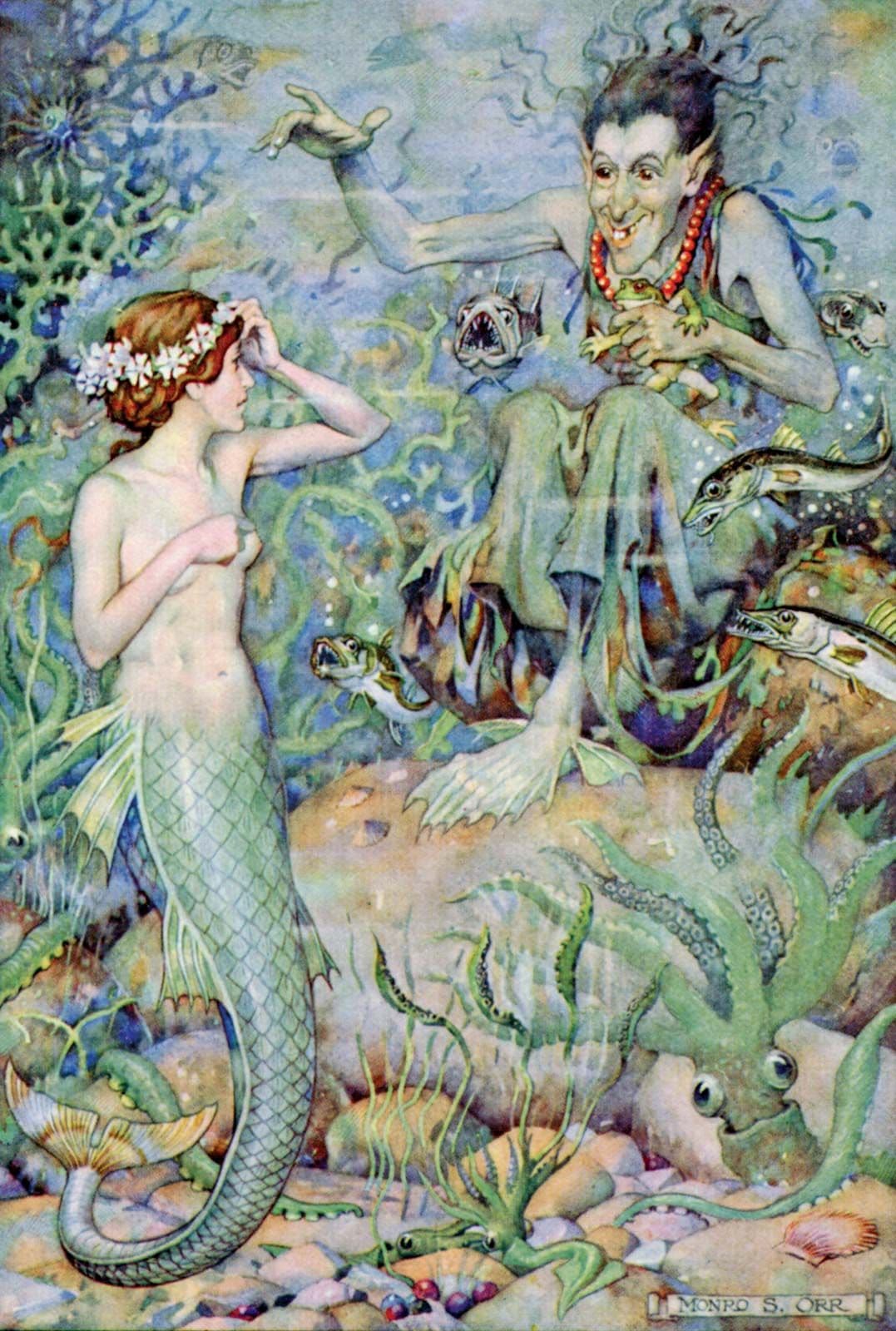
Illustration in Hans Christian Andersen’s “The Little Mermaid”
Thirty years later, in 2023, Walt Disney Pictures released a remake of that movie, this time featuring real actors. The plot once again features the young mermaid who makes a deal with a sea witch to trade her beautiful voice for human legs so that she can discover the world above water and impress a Prince.
Mermaids
So what is actually a mermaid? Basically, it is a fabled marine creature with the head and upper body of a female human and the tail of a fish. Mermaids appear in the folklore of many cultures worldwide, and in Europe, they were natural beings, like fairies, with magical prophetic powers. Also occasionally called sirens, they loved music and singing.
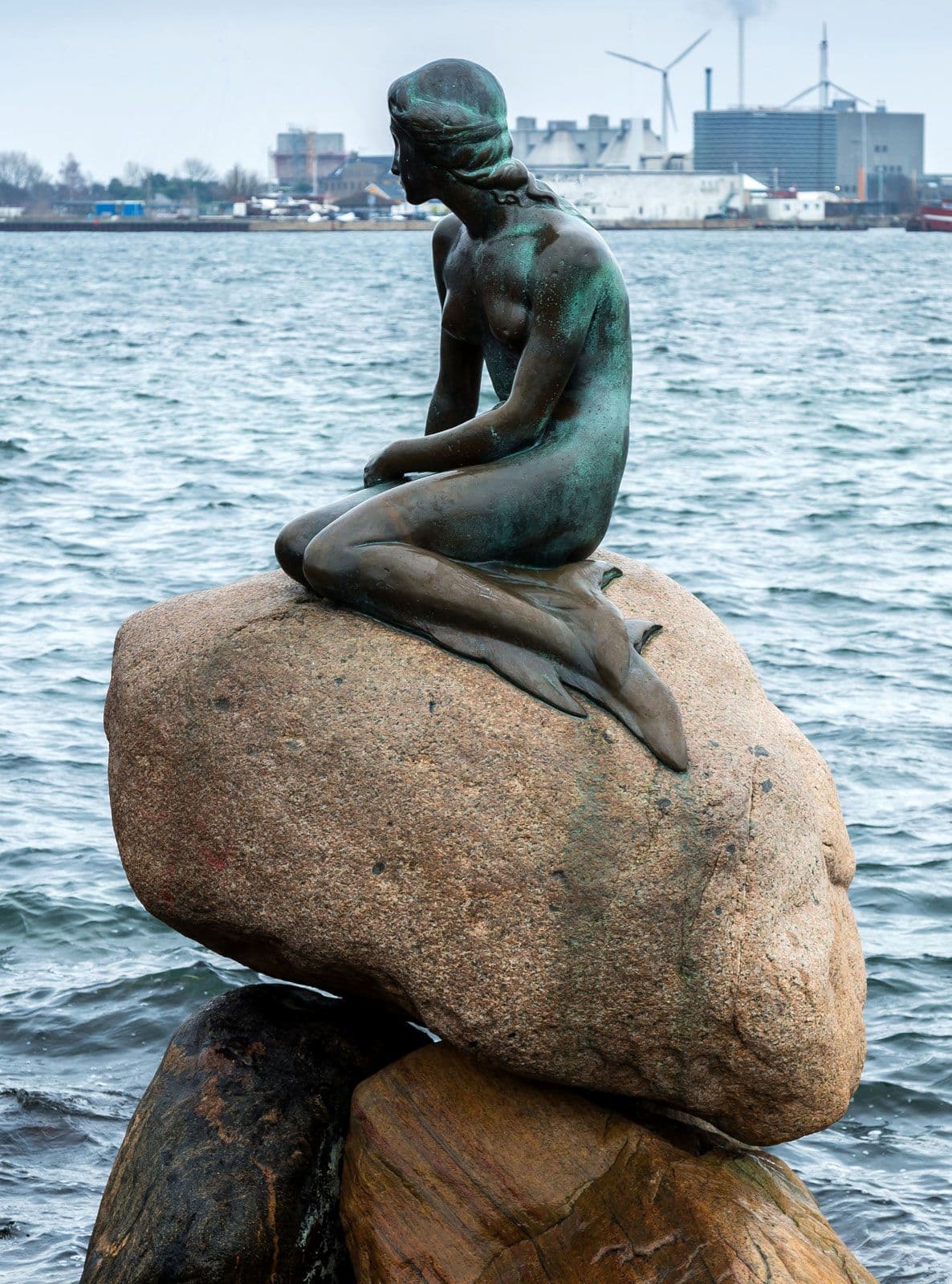
The Little Mermaid (1913) – sculpture by sculptor Edvard Eriksen
Some folktales record marriages between mermaids, who might assume human form and men. And while mermaids are often kind, they can also be dangerous. If offended, they are said to cause floods, shipwrecks, or other disasters. In European folklore, the concept of mermaids as beautiful and seductive singers seems to originate in Greek mythology. And it might be hard to believe, but actual mermaid sightings have still been reported in 2023.
The Fairy Tale by Hans Christian Andersen
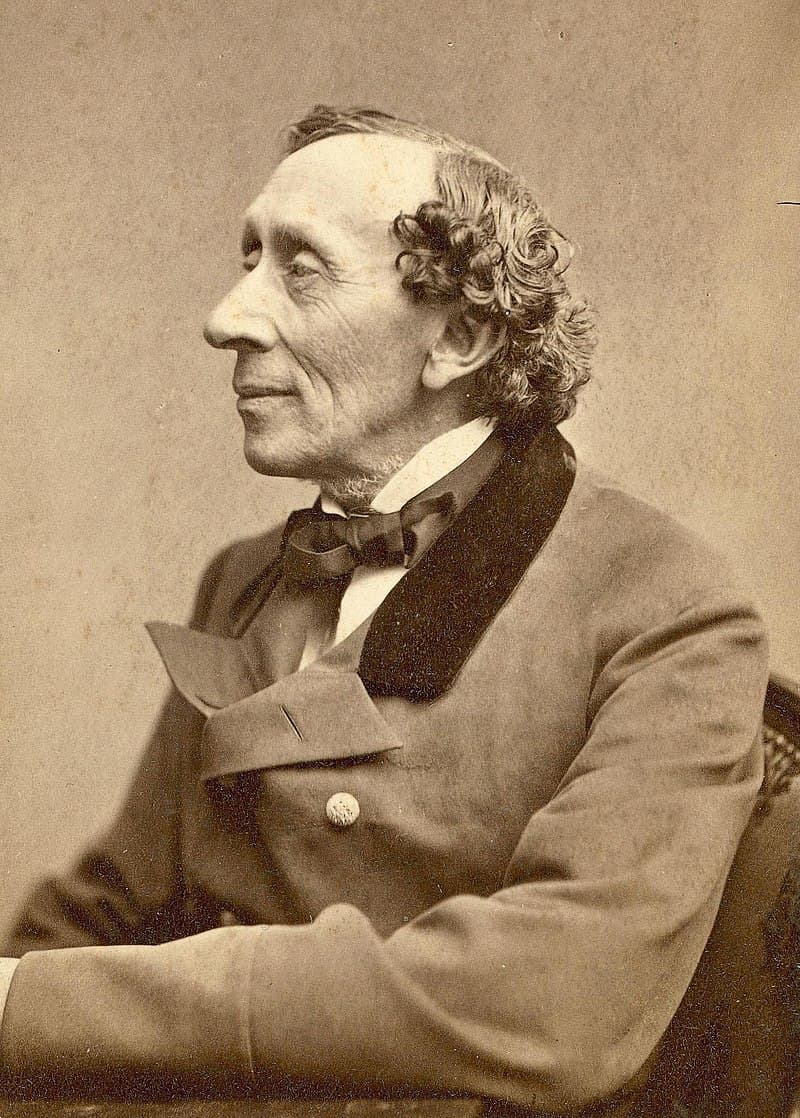
Hans Christian Andersen
As part of a collection of fairy tales for children, Hans Christian Andersen published “The Little Mermaid” in 1837. This enticing story follows the journey of a young mermaid who is willing to give up her life in the sea to gain a human soul. It is one of Andersen’s most beloved fairy tales, and it inspired books, comics, animations, films, operas, and much classical music. That’s all very exciting, so we decided to put together a little blog featuring music associated with mermaids.
Franz Joseph Haydn: “The Mermaid’s Song”
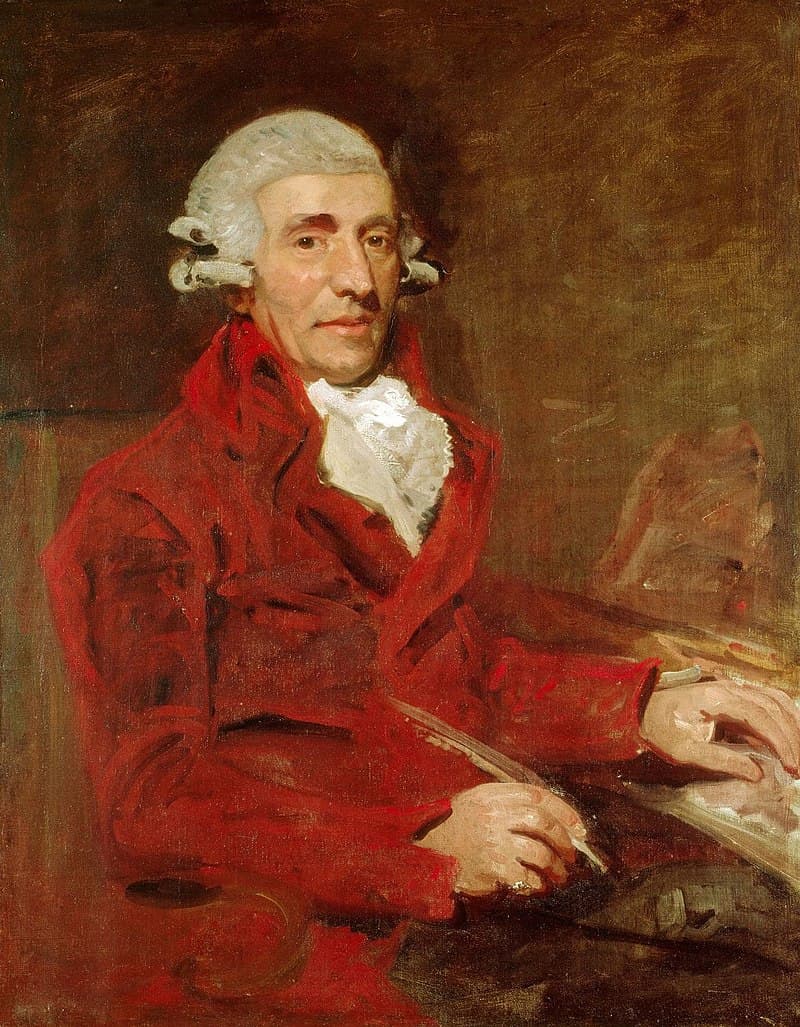
Haydn in London
Franz Joseph Hadyn made a couple of trips to England, and he was soon engaged to arrange a number of folksongs. The country was caught up in a great passion for collecting these melodies, and the publisher William Napier was looking for musical arrangements of his “100 Scottish Folksongs.” Essentially, Haydn needed to provide suitable accompaniments for the “wild and pathetic sweetness of these melodies.” In addition, Haydn was also busy composing two sets of six “Original Canzonettas” primarily for the profitable amateur market.
It has been suggested that Haydn was deeply inspired by Anne Hunter, the widow of the famous surgeon Sir John Hunter. Anne fancied herself a polished poetess writing in the taste of the day. Critics have suggested that her verses were unoriginal, usually soulful and sentimental, and with a dash of Gothic gloom. Each of the six Haydn Canzonettas opens with a song to the sea, and “The Mermaid’s Song” was certainly inspired by the first line of text, “Now the dancing sunbeams play.” Haydn writes a shimmering and glittering piano prelude before the Mermaid calls, “Follow me!” luring the listener into her underwater realm.
FAIL! – Onstage kind!
by Janet Horvath, Interlude
Before we enter that hallowed space—the concert stage— there are the ritual last minute precautions—men: fly zipped, check; women: hooks and buttons fastened especially in the front, check; string players: extra strings, check; oboe and bassoon players: good reeds soaking in water, check; music, check; brass players: valve oil, check; flute and clarinet players: swabs, check.
But no matter how prepared we are, unforeseen calamities can and do occur in performance. Batons, mutes and bows slip out of hands clattering and careening down the stage and sometimes into the audience.
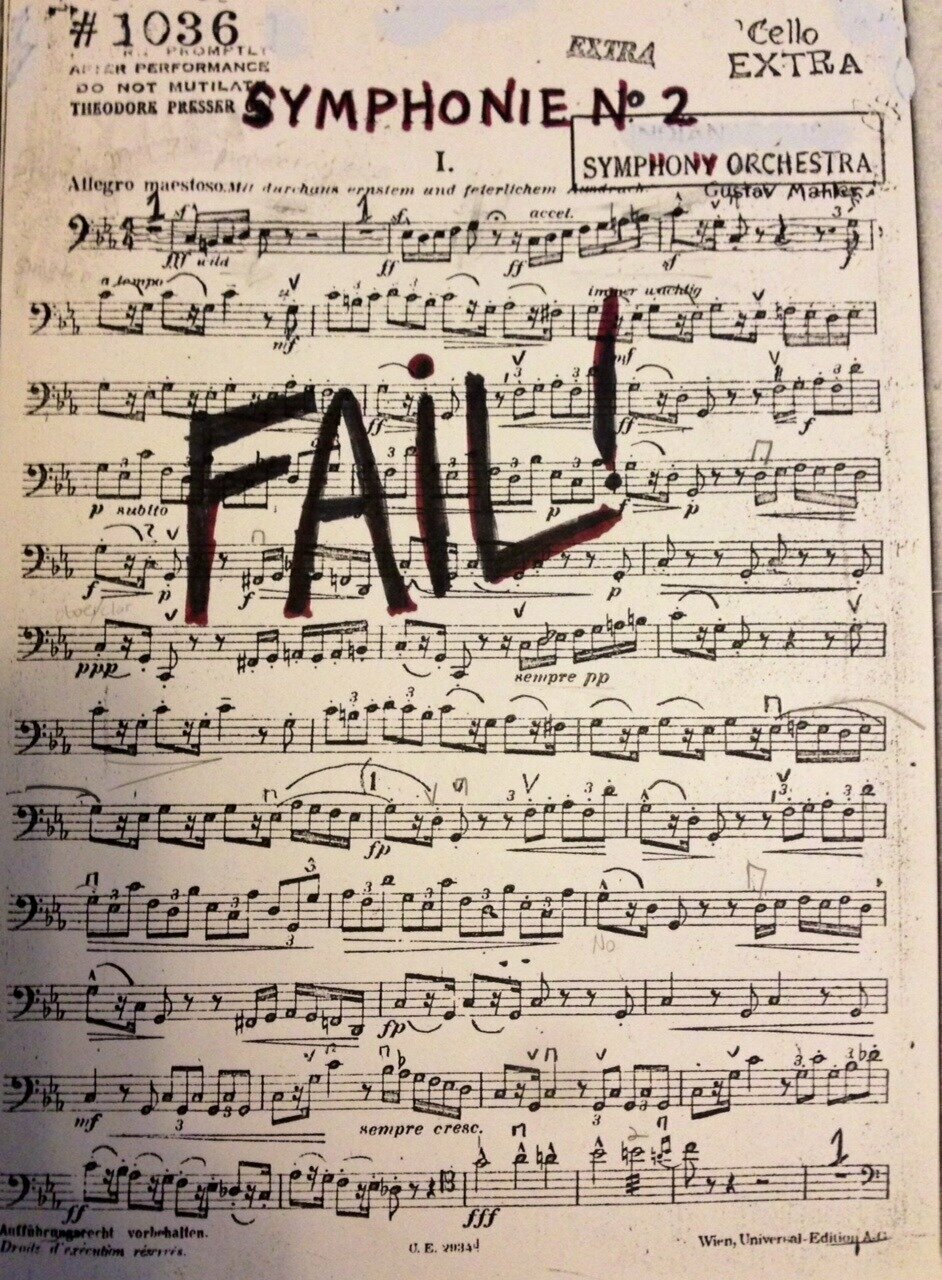
Usually we are prepared for the inevitable string snapping. If it is the soloist or concertmaster, someone will hastily trade violins and then a musician at the back will as unobtrusively and quickly as possible change the string. When it comes to a cello that is easier said than done. My six-foot-four stand partner had a knack for breaking even the thickest string—the C string causing an exploding sound, throwing the entire instrument out of whack. How did cellists react to broken strings on stage?
Guy Johnston BBC Young Musician of the Year 2000
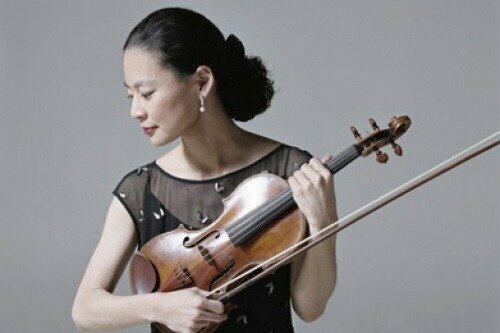
Midori Goto
A famous “fail” occurred in 1985 when the then fourteen-year-old Midori had to swap her violin twice due to two broken strings during a performance with Leonard Bernstein. It was her Tanglewood debut with the Boston Symphony. She was performing the 5th movement of Bernstein’s own Serenade After Plato’s Symposium. In the heat of the action Midori broke the uppermost string—the E string. She quickly traded violins with the concertmaster. A few moments later she broke that violin’s E string. This time she was passed the associate concertmaster’s violin—all without missing a beat!
Certainly I’ve witnessed some startling equipment failures. Yuri Bashmet, world-renowned violist, had a spectacular “fail” during a concert. He was playing his 1758 Testore viola. Suddenly the entire bridge, which holds up all the strings, literally exploded. Dazed, all he could do was shrug.
Yuri Bashmet’s 1758 viola falls apart during performance!
We musicians are often worried about falling: we might trip dodging all the onstage clutter of chairs, stands, microphones, instrument stands, and risers. Sadly, there have been several well-publicized falls of Maestros falling of their podiums James Levine included. Our principal guest conductor in the 1980’s, Klaus Tennstedt, who was a large man, once came tumbling off the podium toward me. I jumped up with my cello, and grabbed Tennstedt to steady him with the cello between us!
Conductor falls off podium
It was particularly horrifying when Itzhak Perlman fell in front of our eyes. Fortunately he was not hurt. Another violinist had carried Perlman’s violin. Perlman refused anyone’s help, got up, and then played brilliantly.
Conductor “fails” are more common. They are known to lose their tempers but rarely do the sparks fly as they did with Arturo Toscanini the great Italian conductor of the NBC Orchestra, who threw temper tantrums regularly. There are two famous stories of him actually causing bodily harm. Once, trying to mediate between two feuding musicians, Toscanini started pummeling one of the players with a ferocious intensity. Another time in Turin, in 1919, Toscanini snapped a musician’s bow near the violinist’s face causing injuries and narrowly missing the player’s eye. Despite apologies and some financial compensation the musician sued. Toscanini was acquitted.
Audiences cause concert “fails” too. Recently at a Toronto Symphony concert an elderly gentleman turned up his hearing aids to better hear the mesmerizing opening of the Shostakovich Violin Concerto played by Julian Rachlin. The cellos and basses begin very softly and in a low register. Then the violinist entered playing without vibrato—starkly. A very loud high-pitched squealing ensued. The conductor stopped the soloist and the orchestra, as the ushers scrambled to find the perpetrator. We sat quietly waiting until finally the gentleman was located and led out of the hall saying, “What’s going on? I can’t hear anything!”
An orchestral concert is not usually the site of fistfights, but there have been two of late. In March of 2012 Maestro Riccardo Muti was conducting a performance of Brahms Symphony No. 2. One usually sits motionless and restrained in symphony concerts, but that evening two men started fighting in one of the boxes. A 30-year-old man started punching an older man over a disagreement regarding their seats. Muti continued the concert during the melee, turning around to throw irritated glares at the perpetrators until they could be subdued. No one was charged.
During the first twenty minutes at the Boston Pops’ opening night of 2007, a scream was heard. Conductor Keith Lockhart gave the signal for the orchestra to stop. A scuffle had broken out in the balconies apparently after one man told another to be quiet. “House security and Boston police stopped the fight, and the audience members were escorted out of the hall,” the Boston Symphony Orchestra said in a statement. The concert resumed with cheers from the audience.
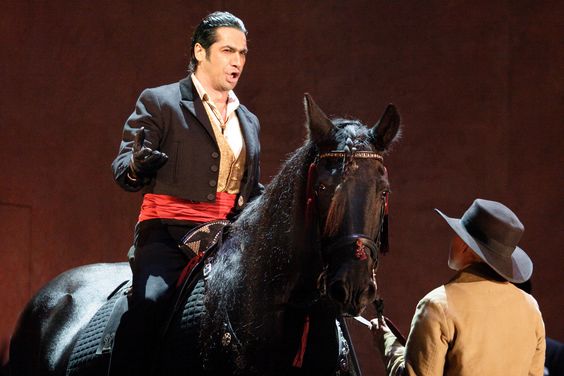
Ildebrando D’Arcangelo in Carmen © ROH/Catherine Ashmore, 2009
Opera patrons more often witness “fails.” One occurred during a performance with Sir Thomas Beecham who was known for his quick wit. In a 1930s production of Carmen at Covent Garden, live animals were part of the action. One of the horses proceeded to ‘do his business’ on the floor. “My God what a critic!” said Sir Thomas Beecham.
We try very hard to keep the show going on no matter what happens. The audience often is unaware of any mishaps onstage and they can enjoy the glorious music uninterrupted. But audiences do love the drama. Anything can happen at a concert hall!